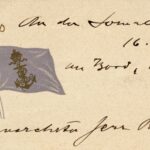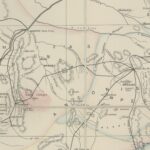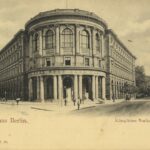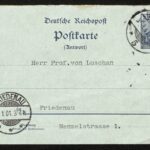



European expansion in the age of high imperialism created almost unthinkable opportunities for individuals. This was the case for Carl Wiese (1860-1912), who acquired large areas and far-reaching powers in the former colonies of Portuguese East Africa (now Mozambique) and British Central Africa (now Zambia, Zimbabwe and Malawi). This was made possible by the competing interests of the European colonial powers Portugal and Great Britain. Carl Wiese took part in both British and Portuguese expeditions into the interior of the country and established connections with local rulers, which he was ultimately able to use for his own purposes. On his travels, Wiese found more and more rock paintings that aroused his interest. Through his contacts with several African explorers, he made contact with Felix von Lu¬schan (1854-1924) in the 1890s. From 1900, Wiese began to send “curiosities”, as he called them, to the Royal Ethnological Museum in Berlin. Over several years, a constant exchange developed between Wiese and Luschan, who was now director of the Royal Museum of Ethnology in Berlin. For Luschan and the museum, Wiese provided access to remote regions about which little was known in Europe. In 1907, Carl Wiese began excavating beneath some rock paintings in Chifumbazi (present-day Mozambique).In fact, he came across ceramics that were to give their name to the Chifumbazi Complex described by David Phillipson in the 1970s.
By examining the collection of letters from the perspective of cultural and scientific history, it is possible to gain far-reaching insights into the closely interlinked world of colonial expansion and the resurgent museum landscape. The Carl Wiese collection, which is still stored in the Ethnological Museum in Berlin, illustrates the often contradictory treatment of collections from colonial contexts: the ethnographica in the collection were highly valued, while the archaeological finds were viewed with disinterest and only reluctantly accepted. In addition, the correspondence about the excavation and its finds provides a glimpse into the development of archaeology outside of European antiquity and the omnipresent ideologies of imperialism.
Members

Prof. Dr. Jörg Linstädter
KAAK
joerg.linstaedter@dainst.de

Kathrin Loges B.A.
KAAK
kathrin.loges@dainst.de
Figure captions
Fig. 1 Carl Wiese to Felix von Luschan, January 16, 1906 [Copyright: Staatsbibliothek zu Berlin]
Fig. 2 Ruggs new map of the Western Nyassaland Goldfields: especially illustrating the explorations of Carl Wiese from 1885 to 1891 [Copyright: Universitäts- und Landesbibliothek Sachsen-Anhalt, Halle (Saale)]
Fig. 3 Postcard of the Royal Museum of Ethnology, around 1900 [from Königliches Museum für Völkerkunde]
Fig. 4 Carl Wiese to Felix von Luschan, January 2, 1901 [Copyright: Staatsbibliothek zu Berlin]